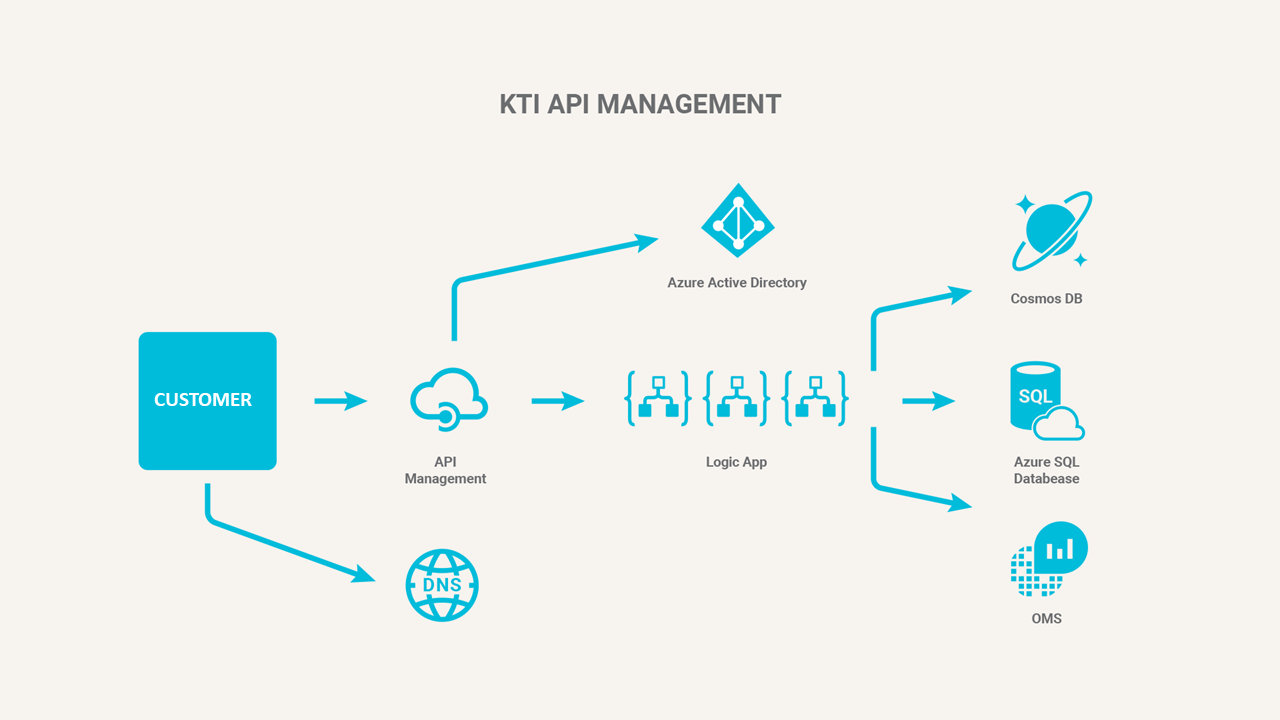"The new solution has reduced the amount of manual labor for both the data provider and the recipient, as the 'pipeline' has been automated. There is no longer a need to manually handle Excel files"
Matti Heiskanen
Director, KTI Oy
KTI Kiinteistötieto Oy is a Finnish expert organization serving the real estate sector, providing information and research services for property management needs. KTI collects raw data related to properties and further processes it into information. Industry stakeholders utilize this information to develop their operations and support decision-making.
KTI's clients include significant real estate investors, developers, service companies in the field, and public sector property organizations operating in Finland. KTI provides services to its clients that enhance their real estate business competitiveness and productivity.
KTI recently initiated a development project aimed at improving the mobility of information. As part of the project, a data transfer solution for rental operation-related data was designed, implemented, and put into use. The project was carried out as part of one of the government's key projects, KIRA-digi, where the mission is to accelerate the digitalization of the real estate and construction sector.
There was a clear need in the industry to facilitate the movement of data. To fully benefit from data in a networked sector, it was first necessary to develop unified data definitions. The first phase of the project focused on defining data content. A data model was created in which core data was commonly agreed upon. In the data model, concepts were harmonized and their definitions standardized.
A functional, unified, and harmonized data model is a prerequisite for the reliability of the information to be utilized, as the raw data must be commensurable and produced with the same criteria.
Data model definitions had been done previously, but the technology for utilizing these models was not at the current level at that time. Therefore, the implementation of the data model into practice was somewhat incomplete. Now, the data model was further developed, and the model was able to be put into practice.
Once a unified data model was created, the actual data transfer solution could be developed.
The goal of the data transfer solution was to enable smooth and secure movement of information between different collaborating parties. The solution will reduce the need for manual work in the future. Previously, the collection and further processing of raw data was laborious, as large volumes of data were largely transferred as separate files. While the automation of data transfer reduces the hassle of manual work, it also decreases the risk of human errors
”Errors decrease as the amount of manual work is reduced. Automation makes fewer mistakes, if it functions correctly, outlines the director of KTI, Matti Heiskanen.
When choosing the technical implementation, ensuring data security was a key factor. The data transfer solution handles confidential, sensitive information, so data security was a central criterion in the selection of the solution. The service needed to be able to grant different levels of authorization and define access rights. The parties providing and reviewing the information had to be defined smoothly. The solution also prepared for the scalability of the service, both in terms of expanding content and the inclusion of new stakeholders
Cloud1 was chosen as the implementer of the data transfer solution due to its expertise in integration. Cloud1 specializes in complex integration solutions, in which the company has extensive experience and broad expertise. At Cloud1, Jan Tuomi and Petri Ihatsu were responsible for the project.

After the construction of the data model, the project progressed with a joint workshop, where a precise definition of the project's scope was achieved. Following this, the project moved on to technical implementation.
The technical implementation was built entirely as a Microsoft Azure solution. Azure was a natural choice for the cloud solution, as it fit well with the technology already in use at KTI.
”It was important to find a competitive solution that could utilize pre-existing components,” states Heiskanen.
The technical implementation of the project, interface management was executed using API Management. API Management is a tool that allows backend interfaces to be compiled and shared externally to a coherent view. In addition, API Management brings good security features and the ability to modify traffic arriving at or leaving the interface. In KTI's case, API Management defined how the content of the data transfer solution is presented externally to other stakeholders involved in the solution.
In KTI's data transfer solution, customers can access KTI's processed information and transmit their own raw data to be processed by KTI through API Management. API Management shows the sending and receiving interface to the parties using the service. Authentication also occurs through API Management.
”It often does not make sense to share the actual interface, as for example, the security possibilities on the backend side are more limited. API Management allows for controlled sharing of interfaces. Additionally, other intelligence can be incorporated into the sharing of interfaces,” defines Cloud1’s service architect Petri Ihatsu.
API Management also includes the ability to modify traffic as it arrives at or leaves the interface. Therefore, configuration and programming possibilities are brought close to the interface. This can be used, for example, to hide or prevent certain data from being transferred or to extract information from one field to another, making the interfaces more compatible. API Management is a very versatile tool that is increasingly finding its place in implementations.

The production deployment of the data transfer solution is gradually implemented depending on the user. For users who have transitioned to the solution, information related to rental operations moves automatically between operators and information systems.
The interfaces created in the solution provide a basis for enriching data later with information from other sources, such as public registers. This further increases the usability of information in property management. Additionally, the data transfer model is built so that all parties involved can transfer and receive information.
The implementation has been left open for extensive further development. In addition to data transfer, we may see an increasing number of service providers in the future, offering information services through the data transfer solution. In accordance with the principles of the platform economy, more operators and possibly service providers can connect to the service in the future, so that the solution continues to serve and generate even more added value in the future.
Does your company have challenging data transfer needs in its operations? Let’s discuss more: myynti@cloud1.fi.
